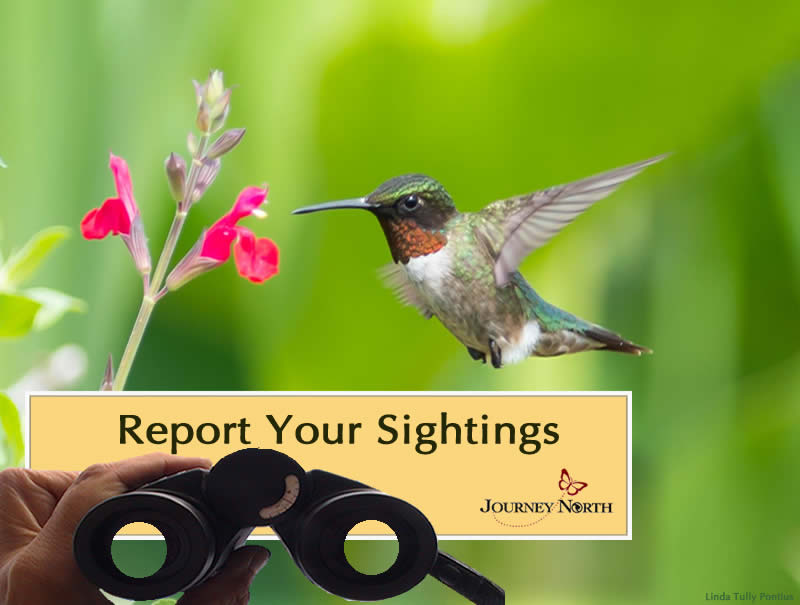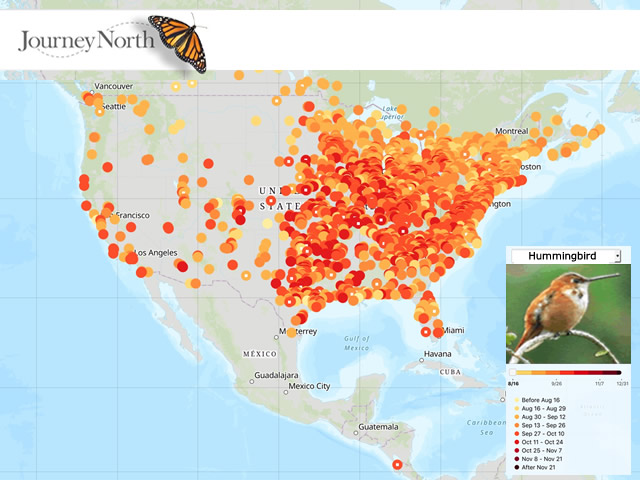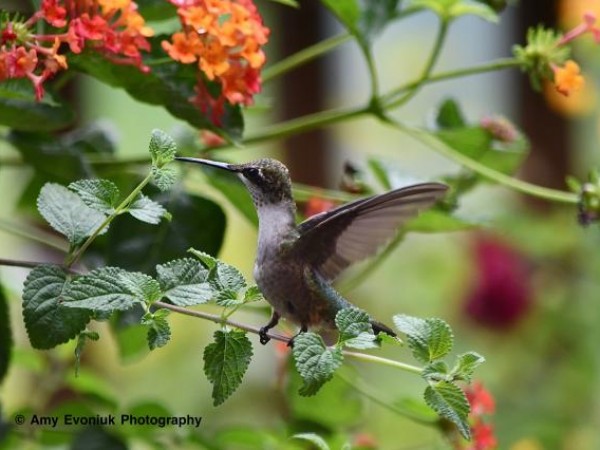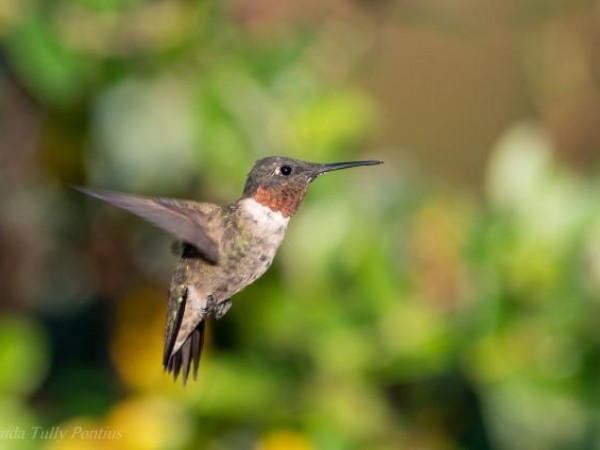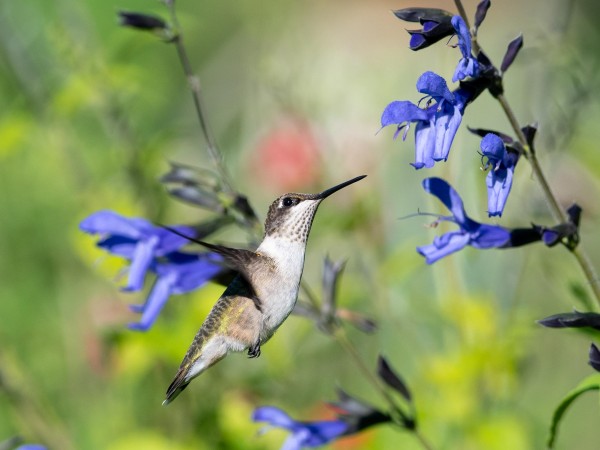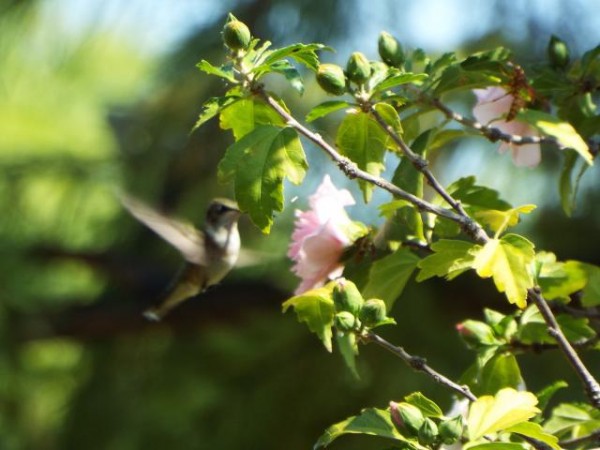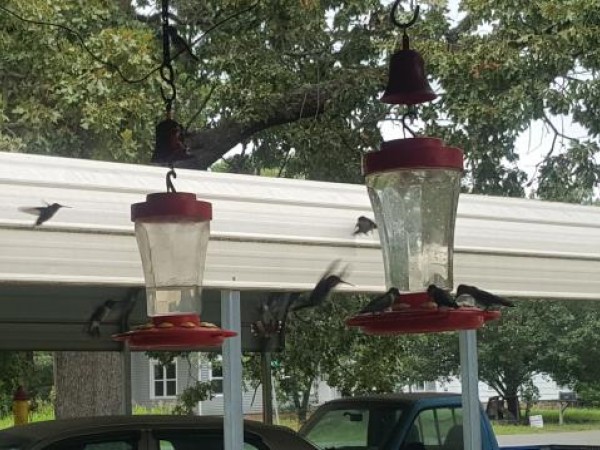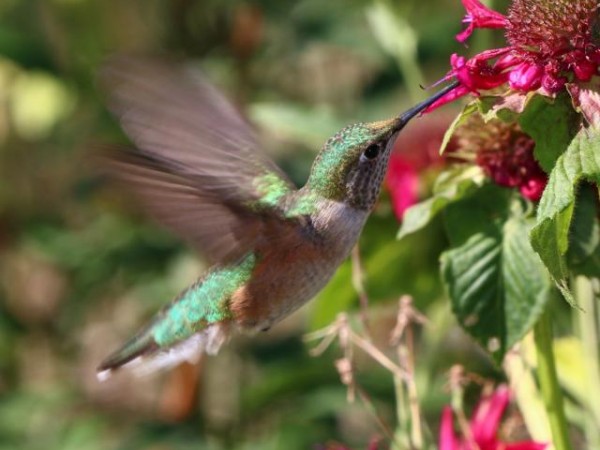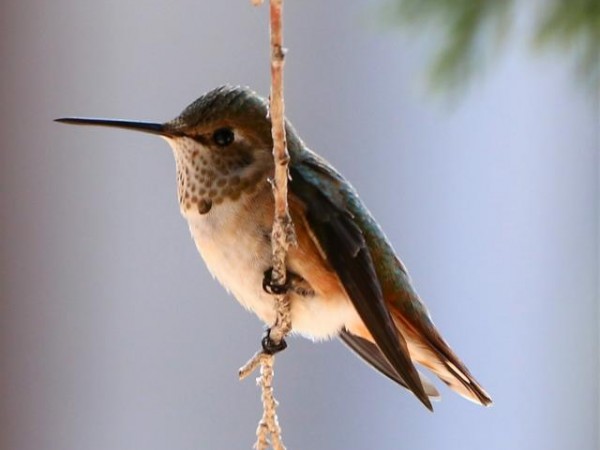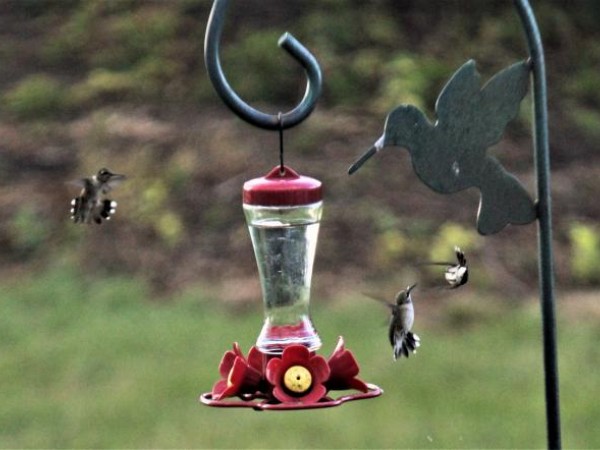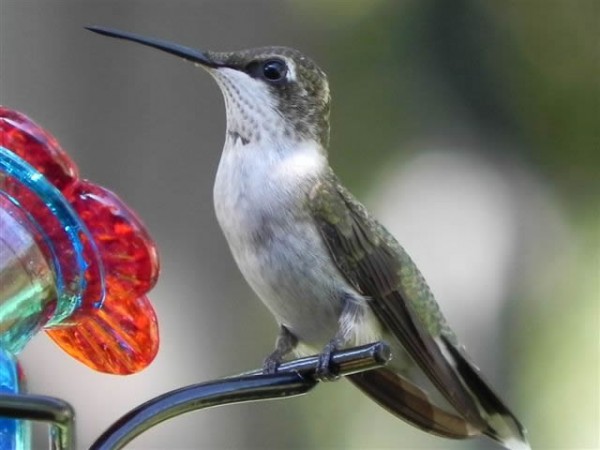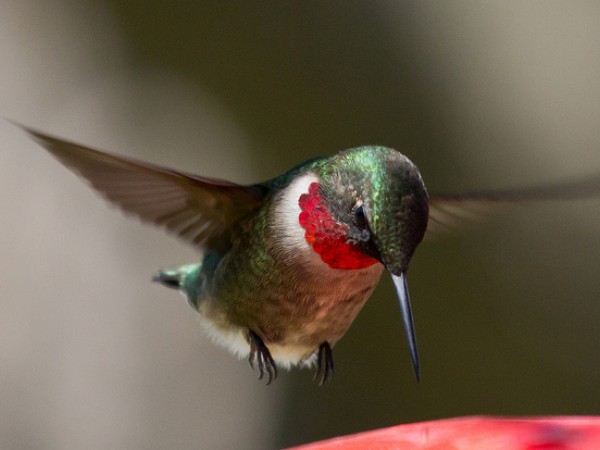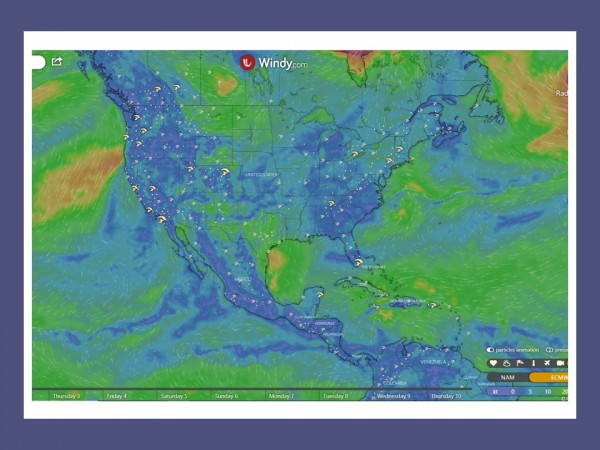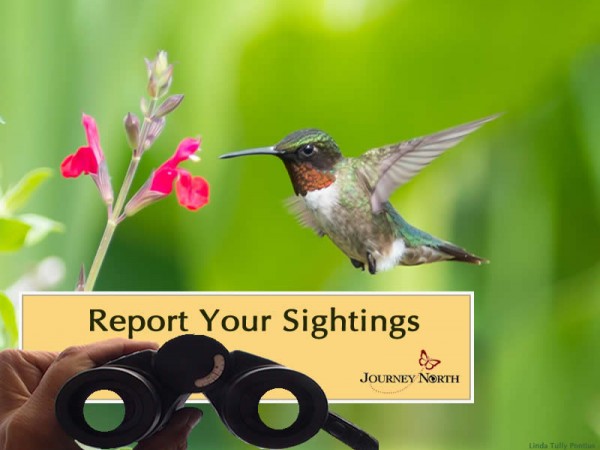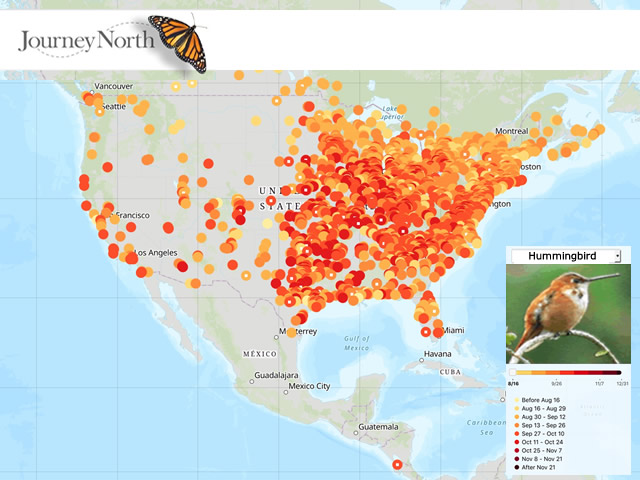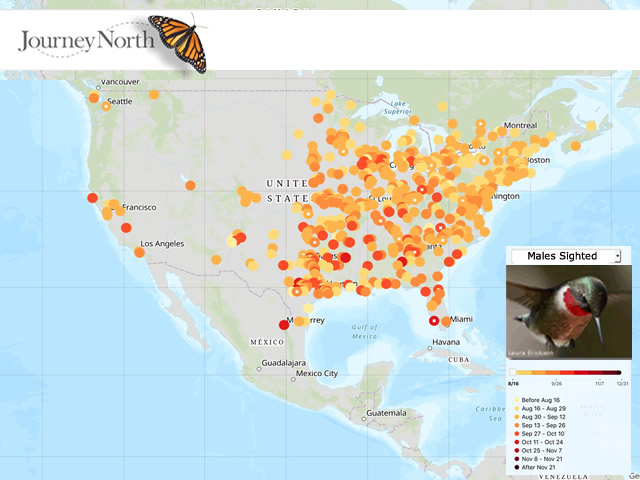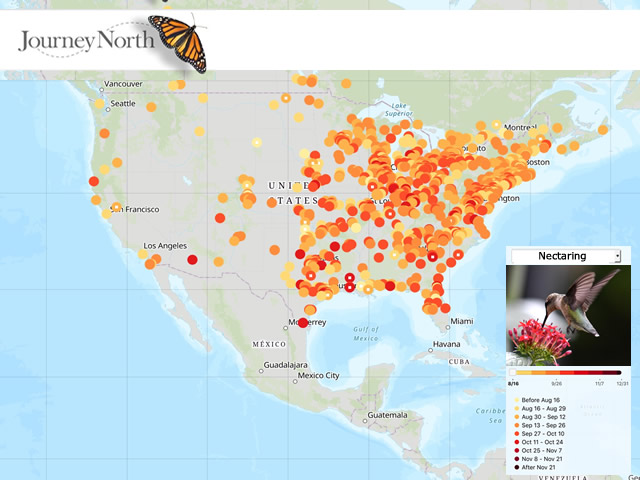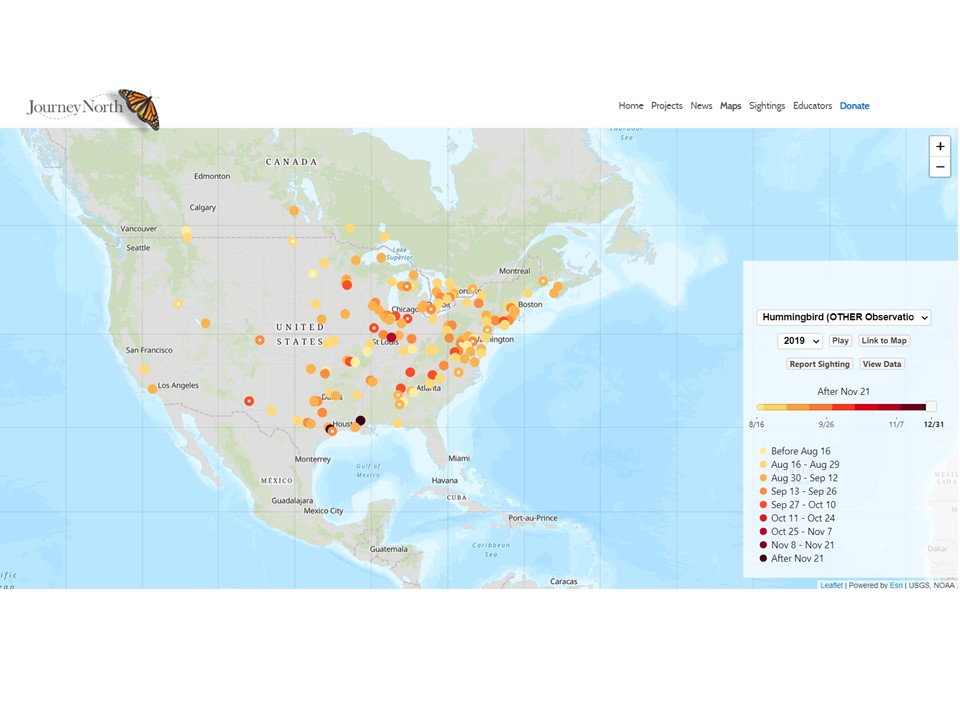Feeding Frenzy
September Is Here!
As many Journey North citizen scientists have noted, it is hard to believe it is September. Soon many of us will be saying goodbye to the hummingbirds that have graced our feeders and gardens.
From Newburgh, IN: Amy had this to say in her report, "Wave "Goodbye" to summer heading south soon. Hard to believe it's September 2. Safe travels to this little hummingbird." (09/02/2020)
But Stop! There are still many hummingbirds to observe and report to Journey North.
Report Adult Male Hummingbird Sightings
In the fall, Journey North asks our observers to report male hummingbird sightings. Why focus on male hummingbirds? Adult male hummingbirds are the first to head south with female and juvenile hummingbirds following not too far behind. Because of their bright, bold plumage, male hummingbirds are often easier to spot as new arrivals and they can be more conspicuous in their absence once they migrate south. Don't forget to include the species you observe in the comment box. We want to know which hummingbird species you have seen.
From Highland, MD: Linda reported, "This adult male has been spending much more time at the flowers and feeders lately. Any day now I expect he will be ready to take off." (08/30/2020)
Report Female and Juvenile Hummingbirds
If you see a female or juvenile hummingbird, please report these sightings under Hummingbird Sighting.
From Highland, MD: Linda reported, "Lots of hummingbird activity this week. The juveniles are busily defending their territories and starting to bulk up for migration. It is always fun to watch as they raid each others territories and race around." (08/30/2020)
Report Hummingbirds Nectaring and Other Behaviors
While on migration, hummingbirds need a steady supply of food to fuel their flight. Journey North citizen scientists help to track the array of nectar resources frequented by hummingbirds. From the Rose of Sharon to Bee Balm, it is never a dull moment if you have nectar rich plants in your garden or even on your windowsill.
From Irving, TX: Barbara observed Ruby-throated Hummingbirds, "At the Rose of Sharon Tree, taken at 11:07 this Sunday morning. Seeing them at feeder and flowers." (08/30/2020)
From Wilburton, OK: Joe reported ,"17 but I don't know how many they really are. I am still feeding a half gallon a day. I hope the picture came through. It is just a sample. I have seen as many as 8 on each feeder. I have four up but they have these 2 as favorites. It is so good to watch." (08/31/2020)
From Colorado Springs, CO: MaryAnn reported seeing an "immature male Broad-tailed nectaring in garden and visiting feeders [as well as] and immature Rufous at the feeder." (09/01/2020)
From Lake Park, MN: Rick noted, "The migration is definitely on. With lows in the upper 40's the "battles" for the feeders is intensifying. One feeder is guarded by one of the resident females. She makes us tired to just watch her. She is nick named the meany. A smaller female has been around and would spare the the larger female so we finally put up a second feeder in front of the house for her. Now she is trying to defend it from all the visitors with little success. Did see one male yesterday." (09/01/2020)
What You Can Do
- Continue to maintain your hummingbird feeders until temperatures drop below freezing. There is no need to increase the sugar to water ratio. Activity: Recipe for hummingbird feeder food
- Keep track of the feeding frenzy like a scientist. Activity: Food Consumed At Our Hummingbird Feeder
- Continue to nurture your pollinator gardens. Next year, consider planting brightly-colored native flowers with long tube shapes. Remember hummingbirds are attracted to the bright colors, not smell. Activity: Plan for 2021 with Photo Gallery of Fall Nectar Sources
- Watch the weather. Weather affects the flight of these small birds as they make their way south. Hurricanes and other tropical storms pose challenges to both humans and hummingbirds alike. Hummingbirds have been found to "wait out" storm. However, after extreme storm events, hummingbirds may have problems finding enough food sources. Others may have been driven far off-course. Activity: Watch Windy.com
- Keep reporting to Journey North.
Fall Migration 2020
Report at least once per week as long as hummingbirds are present. Do not report when you no longer see them.


